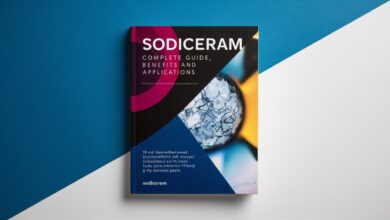Simpcitu: The Future of Simplified Digital Innovation

In today’s rapidly evolving digital age, businesses and individuals alike are searching for tools and systems that streamline complexity, enhance performance, and promote innovation. Simpcitu has emerged as a groundbreaking concept that bridges the gap between simplicity and digital intelligence. This article delves into what Simpcitu means, why it’s revolutionizing the tech landscape, and how its principles can transform industries worldwide.
What Is Simpcitu? Understanding the Concept
The term Simpcitu is derived from the word simplicity, reflecting the idea of making digital solutions more intuitive, efficient, and user-centered. It represents a movement toward minimalism in technology, where advanced systems are built on clear, accessible designs that deliver maximum output with minimal complexity.
In an era dominated by data overload, Simpcitu focuses on clarity, usability, and functionality. The philosophy behind it is to reduce unnecessary digital clutter, enabling users to experience seamless technology without the burden of complexity. Whether applied to software design, digital marketing, or business automation, Simpcitu is about creating smart systems that just work — effortlessly.
The Core Principles of Simpcitu
1. Efficiency Through Simplification
At the heart of Simpcitu lies the belief that simplicity breeds efficiency. Complex systems often slow down processes, increase human error, and create bottlenecks. By simplifying workflows and user interfaces, organizations can drastically reduce the time it takes to perform essential tasks while improving accuracy and productivity.
Companies adopting Simpcitu-driven strategies often experience a boost in operational performance and a decrease in costs. Streamlining processes eliminates redundancy, allowing teams to focus on creative problem-solving and innovation rather than navigating overly complicated systems.
2. Human-Centric Design
Simpcitu prioritizes user experience (UX). It revolves around creating interfaces and solutions that align with human behavior and intuition. The idea is not to dumb down technology but to make it so well-designed that anyone, regardless of technical skill, can benefit from it.
When businesses design with Simpcitu in mind, they foster inclusivity, accessibility, and ease of adoption. The result is a technology ecosystem that empowers rather than overwhelms users.
3. Integration and Automation
Another core pillar of Simpcitu is seamless integration and automation. In today’s interconnected world, digital tools must work harmoniously. Simpcitu advocates for platforms that integrate effortlessly with others, reducing the friction between systems.
Through automation, repetitive tasks are handled intelligently, freeing human capital for strategic thinking. This combination of integration and automation allows organizations to operate more cohesively and efficiently — hallmarks of the Simpcitu framework.
Simpcitu in Business Transformation
Modern enterprises are increasingly embracing Simpcitu-based strategies to redefine how they operate and engage customers. From startups to multinational corporations, the emphasis on simplicity is transforming internal operations, marketing, and product development.
Simplifying Digital Workflows
Businesses waste countless hours on convoluted processes that could easily be automated or restructured. By adopting Simpcitu-inspired tools, companies can create intuitive workflows that require minimal training. This transformation ensures that employees can focus on high-value activities instead of navigating complicated systems.
Enhancing Customer Experience
Today’s customers demand fast, personalized, and frictionless experiences. Simpcitu helps companies redesign customer touchpoints — websites, apps, chatbots — to be clean, responsive, and engaging. When users find it easy to interact with a brand, satisfaction and loyalty increase exponentially.
Driving Innovation
Simplicity often sparks creativity. The less time teams spend dealing with complexity, the more they can focus on innovation and strategy. Simpcitu creates an environment where bold ideas flourish, leading to new products, services, and business models.
Simpcitu in Technology and Design
The technology sector is one of the biggest beneficiaries of the Simpcitu philosophy. From software engineering to UI/UX design, Simpcitu principles are redefining how technology is built and delivered.
Minimalist Software Development
Developers are now focusing on clean code, modular design, and intuitive interfaces. The Simpcitu approach encourages building systems that perform complex functions in simple, understandable ways. This leads to fewer bugs, faster deployment, and smoother user experiences.
Smart Automation and AI
Artificial Intelligence and automation can be daunting, but Simpcitu makes them accessible. By designing AI-powered systems that are easy to configure and understand, even small businesses can harness the power of automation. The focus is on intelligent simplicity — AI that serves people, not the other way around.
Sustainable Tech Ecosystems
A lesser-known aspect of Simpcitu is its impact on sustainability. Simpler systems use fewer resources, both in terms of computation and human effort. This aligns perfectly with global goals of sustainable and energy-efficient technology.
How to Implement Simpcitu in Your Organization
Implementing Simpcitu begins with a cultural shift. It’s about rethinking processes, tools, and communication to remove friction and embrace efficiency.
Step 1: Audit and Identify Complexity
Start by evaluating existing systems and processes. Identify areas of redundancy, confusion, or inefficiency. These are the best opportunities to introduce Simpcitu-based improvements.
Step 2: Simplify and Standardize
Streamline operations by reducing unnecessary steps, integrating compatible tools, and creating standardized workflows. The goal is to ensure that everything — from task management to communication — operates with clarity and purpose.
Step 3: Empower with Automation
Incorporate automation tools that align with your goals. Automate repetitive tasks such as reporting, data entry, or customer communication. This approach saves time, reduces human error, and allows employees to focus on strategic objectives.
Step 4: Focus on Continuous Improvement
Simpcitu isn’t a one-time project; it’s a continuous journey. Regularly assess the effectiveness of simplified systems and seek user feedback to make incremental improvements.
The Future of Simpcitu: Redefining Digital Excellence
As technology continues to evolve, Simpcitu will play a critical role in shaping the next era of digital innovation. From AI-driven automation to hyper-personalized experiences, simplicity will remain the foundation upon which complex systems are built.
Organizations that embrace this principle will enjoy greater agility, customer satisfaction, and scalability. The future belongs to those who can combine technological sophistication with effortless usability — the essence of Simpcitu.
Conclusion
In a world driven by rapid technological advancement, Simpcitu stands as a beacon of clarity and purpose. It challenges the notion that complexity equals progress and instead promotes innovation through simplicity. By adopting the Simpcitu mindset, businesses and individuals can achieve higher efficiency, better experiences, and lasting success in the digital age.
Frequently Asked Questions (FAQ)
1. What does Simpcitu mean?
Simpcitu represents the philosophy of simplifying digital systems to make them more efficient, user-friendly, and productive.
2. How can businesses benefit from Simpcitu?
By applying Simpcitu, businesses streamline operations, enhance customer experience, and foster innovation through simplification.
3. Is Simpcitu applicable to all industries?
Yes. Whether in technology, marketing, education, or healthcare, Simpcitu principles can improve performance and user satisfaction.
4. How does Simpcitu support innovation?
Simplifying systems removes barriers to creativity, enabling teams to focus on strategic ideas and innovative solutions.
5. What tools can help implement Simpcitu?
Automation platforms, integrated communication tools, and intuitive UX design software all support the Simpcitu framework.



